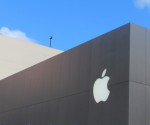5 ways developers can exploit geospatial tech in 2016

GUEST:
Since the rise of geospatial technology, applications like Facebook, Uber, and Grindr, have enabled users to engage with their surroundings to connect with friends, book a room, or set up a date.
But the application of geospatial technologies is really in its infancy. End users demand fast access and precise services that fit their interests, leaving most app developers playing catch up. Here are five tips to leverage the power of geospatial technologies to meet user demands in 2016:
1. Connect data science with geospatial services. Many app developers settle at engaging users with sponsored content based on broad high-level editorial decisions. This practice can end up serving content that is poorly targeted, or even worse, turning users off. Core user data like what interests they have, which restaurants they hit last Friday, and which events they avoided over the weekend, offers huge data mining potential. Be smart: Prioritize investments in machine learning and hire data scientists to perform deep analysis. You’ll end up knowing more about your users’ interests than they know themselves. Connect this data with local services to provide a baseline for serving content that is best suited to your users.
From VentureBeat
2. Optimize for wearable technology. Apple and Google have made huge investments into wearable technologies, but are end users really getting the most out of them? What seems to be a cool fitness monitor or a convenient way of checking and prioritizing email is actually a unique stream of behavioral data input for developers and a localized engagement output for end users. Think of it as another powerful geospatial data stream, from detecting and measuring user location patterns and cross-referencing user preferences to delivering recommendations that make perfect sense to the user’s current time and place. Make your marketing folks super happy; you won’t find nearly as many competitive offerings in wearable marketplaces as you will in overcrowded app stores.
3. Minimize sophisticated security threats. DDoS attacks are a breeze compared to someone using your geospatial technology to segment, pinpoint, and even engage your users for malicious purposes. Whether it’s a lone wolf or well-financed group, understand and accept that these forces will try to figure out and use geospatial capabilities to take advantage of your users.
Invest in a two-pronged security approach: First secure the door by enhancing network security and data encryption to block attempts. Second, identify malicious user signatures by analyzing and detecting similar behavioral characteristics over time.
4. Curb spam and phishing abuse. Geospatial capabilities are a dream come true for spammers and phishers that create real-life profiles, select and engage victims, and quickly lure in victims using artificial intelligence. The end result: a spiraling volume of users clicking and engaging with competitive services, dodgy scams, and fraudulent offers. Build intrusion detection systems that collect and analyze data points from users (i.e. who do they talk to and when) and correlate geospatial and phone sensor data (i.e. phone orientation and accelerometer input).
5. Harness the two-way value street of iOS and Android. Many app developers use an iOS-centric design form for all UX/UI. That is, copy, paste, and patch iOS design schemes and styles to any mobile device OS. Android has many unique and powerful functions like tactile animations and floating buttons. Hire mutually exclusive experts in Android and iOS design and development and enable them to complement (not copy from) the other. While you’re at it, focus your UX/UI to accommodate more one-handed use — it’s happening more and more with the use of larger phones.
2016 will be all about predicting and anticipating consumer behavior. In order to take advantage of the engagement potential that geospatial technologies offer, you’ll need more and more data, both in user volume and metrics, to gain and maintain a competitive advantage. Go big with investments in machine learning and hire the smartest data scientists out there to analyze data sets to understand exactly what your users want, at the perfect time, and the perfect place.
Lukas Sliwka is the CTO at Grindr LLC. Follow him: @LukasRepublic.









